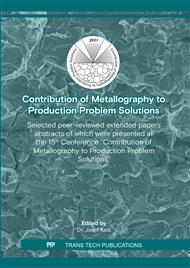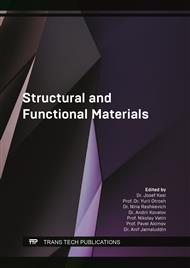p.19
p.26
p.31
p.37
p.43
p.49
p.57
p.63
p.70
The Evaluation of Ti-24Nb-8Ta-4Sn Alloy Prepared by 3D Printing
Abstract:
The most common titanium alloy used in combination with additive manufacturing is Ti-6Al-4V ELI. On the other hand, the 3D printing of β-Ti alloys is still in the stage of development of both materials and their treatment. The newly developed biomedical Ti alloys are often containing Nb, Ta, Zr. These alloys are showing very good values in terms of biocompatibility and corrosion resistance while their elastic modulus may be in the range of 30-70 GPa. The printing of these alloys is however limited by their relative novelty. Powders are not yet available through traditional commercial ways. In this work, Ti–24Nb–8Ta–4Sn specimens prepared by the selective laser melting (SLM) method were used. The porosity was evaluated by two methods: area porosity evaluated by image analysis on metallographic specimens and volume porosity evaluated by micro-computed tomography (μCT). The microstructure was observed using both light and scanning electron microscopy (SEM). The SEM was as well used for energy dispersive spectroscopy (EDS) for chemical analysis and the analysis of crystallographic orientation was conducted using the method of electron backscattered diffraction (EBSD).
Info:
Periodical:
Pages:
43-48
Citation:
Online since:
July 2022
Authors:
Keywords:
Price:
Сopyright:
© 2022 Trans Tech Publications Ltd. All Rights Reserved
Share:
Citation:



